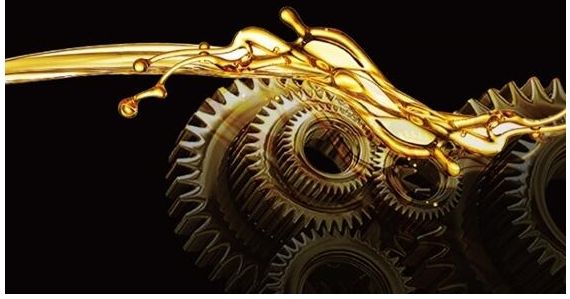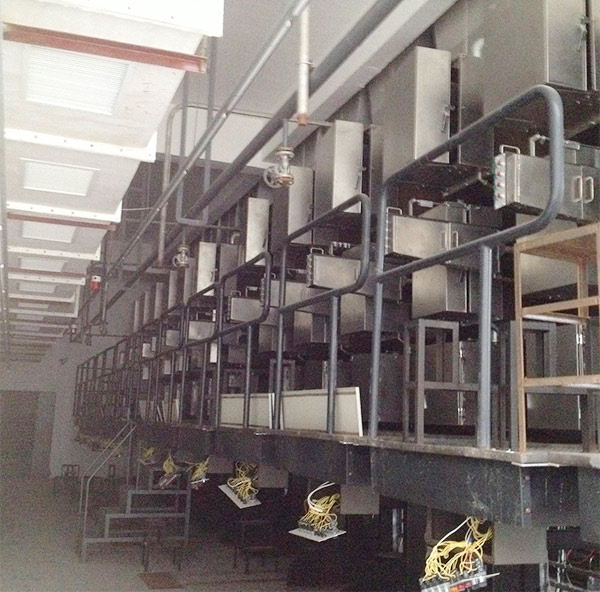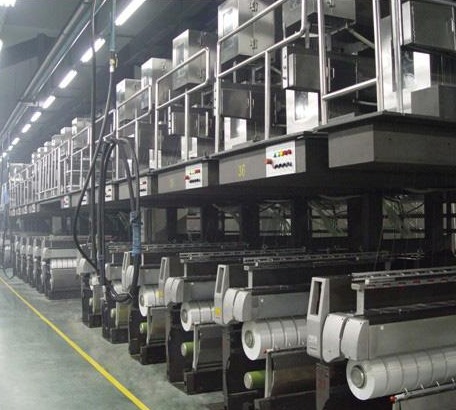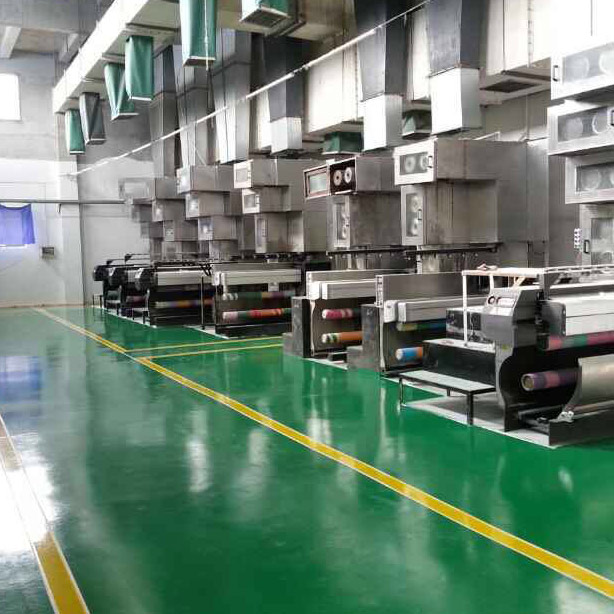- Polypropylene spinning machine
- Polypropylene FDY equipment
- Polyester POY spinning machine
- Polyamide FDY common and high strength equipment
- Polyester FDY equipment
- Polyester high strength equipment
- polyester、Polyamide、 Polypropylene BCF equipment
- Small spinning machine
- All kinds of spinning special parts
- Unlock the Xingji password from the spring rhythm, gather the core force of the enterprise team, and explore the strategy of enterprise management!
- Blue and white school uniforms back? From blue and white memory to vintage store fashion products, textile people can seize the flow code!
- China's first cotton suit AI design competition was launched in Shanghai
- Global textile layout - Fubon Machinery Fubon Machinery polypropylene spinning machine technology
- Pay tribute to her power | Fubang machinery with ingenuity to weave on female glory, youth bloom!

- Contact:Mr. Huang Guofu
- Cel:0086-13901505556
- Fax:0086-519-83341119
- Email:czfb5556@126.com
- Add:No. 288-8 ChangLi Rd, Huangli Town, Changzhou, JS PRV.
Doing a good job in the lubrication management of textile equipment is an important part of the management of textile enterprises. Strengthening equipment lubrication management, ensuring normal operation of equipment, saving energy, reducing maintenance costs, and extending equipment service life are important ways to improve the economic benefits of textile enterprises.
Lubrication requirements for textile equipment
The lubrication of textile machinery and equipment should be determined according to its speed, load and friction pair form. It has been clearly marked in the general specification, and should be strictly implemented in accordance with the requirements in production.
Imported textile equipment has the characteristics of high speed, heavy load and good reliability of equipment operation. Most of its transmission forms use gearbox transmission. Most of the support points of the transmission shaft adopt rolling bearings, which improves the reliability of the transmission and also changes. Lubrication method.

In the new type of textile equipment, most of them adopt the method of centralized circulation lubrication or gearbox oil bath lubrication, so the lubricating grease is required to have better oxidation resistance, rust resistance and stain resistance. The lubrication cycle of imported textile equipment is described in detail in the manual. The parts that need lubrication every day, every week, every month and every season are marked clearly, and should be strictly implemented in production. Under normal circumstances, most of the lubricating greases marked in the instructions for imported equipment are products of world-famous companies, and their performance is good. As long as the lubrication is carried out according to the regulations, the equipment can be operated normally.
In the lubrication work, it is necessary to prevent the oil circuit from being blocked. Pay attention to the label of the lubricating oil. Always check the oil level display window of the lubricating oil to avoid mechanical damage caused by lack of oil and cause economic loss. In the daily lubrication management, according to the lubrication requirements of the equipment, a detailed lubrication cycle should be formulated, and the lubrication should be carried out strictly according to the personification, quality, fixed point, quantitative, and timing “five fixed”. At the same time, corresponding inspection means should be provided to ensure Lubrication quality ensures the normal operation of textile equipment and the normal performance of the equipment.
Selection and storage of lubricating oil
There are many types of textile equipment, the operating speed and load are different, and the lubricating oil labels used are also different. There are many types and labels of lubricants. It is especially important to choose the type and label of the lubricant and the storage of the lubricant. The selection of the lubricating oil can be carried out according to the type and label specified in the equipment manual. When purchasing lubricants, pay attention to the physical and chemical properties of the lubricant, such as the viscosity, corrosion resistance, rust resistance, flash point, water content, impurity content and acid value of the lubricant.
In the production, according to the actual performance of the equipment, operating conditions and the description of the lubricant manufacturer, in consideration of the comprehensive economic benefits, and can meet the lubrication requirements, and facilitate the management, reduce the type and label of the lubricant as much as possible to reduce Purchase storage costs. Imported lubricants must be used in key parts of imported equipment to improve lubrication performance, reduce energy consumption, and extend the service life of equipment. Non-important parts can be considered to use domestic lubricants to reduce operating costs.
The storage and storage of lubricating oil has an important influence on the performance of lubricating oil. Petroleum products are prone to decomposition when exposed to light, heat and non-ferrous metals, especially copper, or chemically react with oxygen in the air to form extremely unstable oxides and even gels and acids, thus seriously affecting Its use properties, even corrosion, damage the machine. In order to prevent the oxidation and deterioration of lubricating oil, it should not be in contact with non-ferrous metals such as copper and lead during storage. The original barreled lubricating oil should be kept clean, protected from light, cool and ventilated during storage, and various types and labels of lubricating oil should be conspicuous. Identification to avoid confusion between categories and labels.
Lubricating oil storage time should not be too long, generally should not exceed 1 year, so as to avoid deterioration of lubrication effect, so we must strictly control the storage quantity. Some lubricants need to be naturally precipitated for a certain period of time before they can be used. For example, hydraulic oil can be put into use after being stored for one week after purchase, so that impurities can be fully precipitated. Therefore, some lubricants must be mastered when they cannot be purchased.
Problems to be aware of when lubricating equipment
The operating environment of textile equipment is poor, and most of them operate under high dust content. The support points of the rotating parts of the machine are susceptible to dust pollution, resulting in increased frictional resistance and increased mechanical wear. Pay special attention to abrasive wear during maintenance and lubrication of the equipment. Abrasive wear is an abnormal wear caused by worn particles (fine sand, iron filings, dust, etc.) on the two friction surfaces, which is extremely serious to mechanical wear.
Abrasive wear is caused by poor maintenance and lubrication management, and the assembly of careless residual dust at the lubrication point, poor sealing, external dust intrusion, poor lubricant management, contamination, metal powder generated during the initial operation of the running-in, and poor lubrication of the lubrication system Will cause abrasive wear. Abrasive wear has a great impact on the life of the machine. The wear and tear in the industry accounts for about 50%. It is regarded as the enemy of industrial machinery damage and should be paid enough attention.
When storing and storing lubricating oil, the container can not be stored in the workshop without being covered, and the refueling tools should be cleaned regularly to prevent the lubricating oil from being contaminated and causing increased wear. In the maintenance work, the replacement of the machine parts and the replacement of the oil should be done carefully. The machine parts should be cleaned after the machine parts are cleaned. The crepe cloth of the important parts should be cleaned before use to avoid dust pollution and new replacement. The lubrication parts of the parts should be thoroughly cleaned and the installation parts should be thoroughly cleaned.
Do a good job of lubrication management to improve overall efficiency
The lubrication of textile equipment is an important part of the textile industry. Lubrication, also known as preventive maintenance, is mainly to prevent the occurrence of equipment accidents and improve equipment productivity and increase economic benefits. Doing a good job of lubrication management of equipment can improve the operation rate of equipment, reduce the failure rate, reduce maintenance costs, and extend the service life of equipment. In particular, it is extremely important to ensure the normal operation of equipment such as sizing machines, warping machines and air compressors for key processes.

In short, enterprise lubrication management is a relatively complex system engineering, which involves procurement, storage, technology, management, maintenance and many other aspects. Today, with the increasing number of imported textile equipment, how to manage the lubrication of domestic and imported textile equipment from the types of oil, procurement, storage, use, and oil exchange, we must continue to explore and research for future use. Good management of imported and domestic textile equipment accumulated experience, so that equipment lubrication management work is improving day by day.

Changzhou Fubang Chemical Fiber Machinery Factory mainly produces: polyester industrial yarn spinning combined machine, polyester POY spinning machine, polypropylene FDY spinning machine, polypropylene FDY production line, polypropylene FDY equipment, polypropylene FDY machinery, polyester industrial yarn spinning combined machine, Polyester FDY spinning machine, polypropylene spinning machine, polyester FDY production line, polyester FDY machine, nylon FDY spinning machine, polyester industrial yarn spinning machine.
- Unlock the Xingji password from the spring rhythm, gather the core force of the enterprise
- Blue and white school uniforms back? From blue and white memory to vintage store fashion p
- China's first cotton suit AI design competition was launched in Shanghai
- Global textile layout - Fubon Machinery Fubon Machinery polypropylene spinning machine tec
- Pay tribute to her power | Fubang machinery with ingenuity to weave on female glory, youth
- 2025 The National two sessions opened, the textile industry can seize the opportunity to f
- High efficiency, energy saving, stability and flexibility - Analysis of the four core adva
- Shaanxi Province textile fiber new material industry work promotion meeting
- When the polypropylene spinning machine meets the spring day: Weaving the chord between te
- Management thinking | bid farewell to traditional cognition, unlock the modern manager rol




